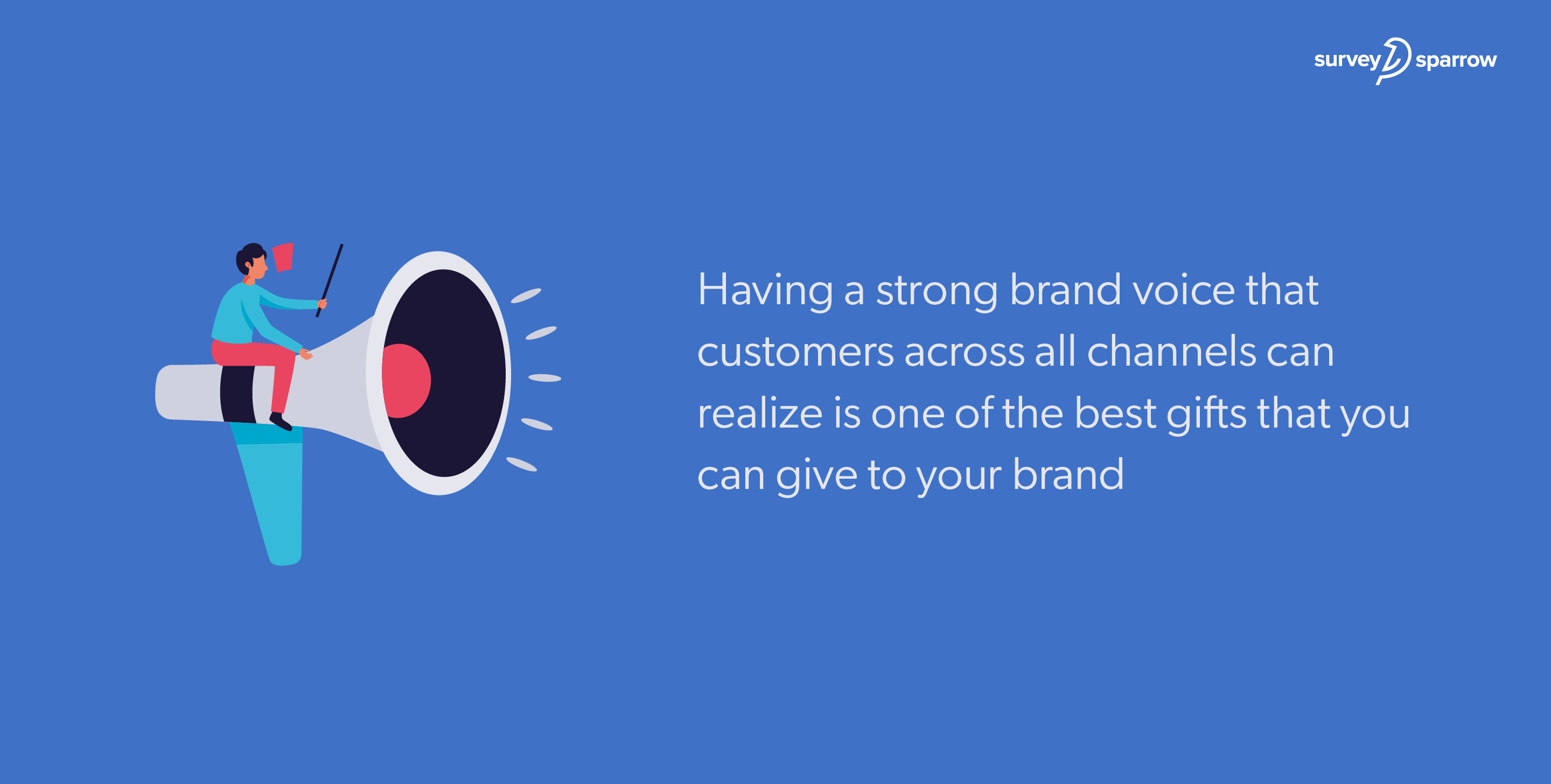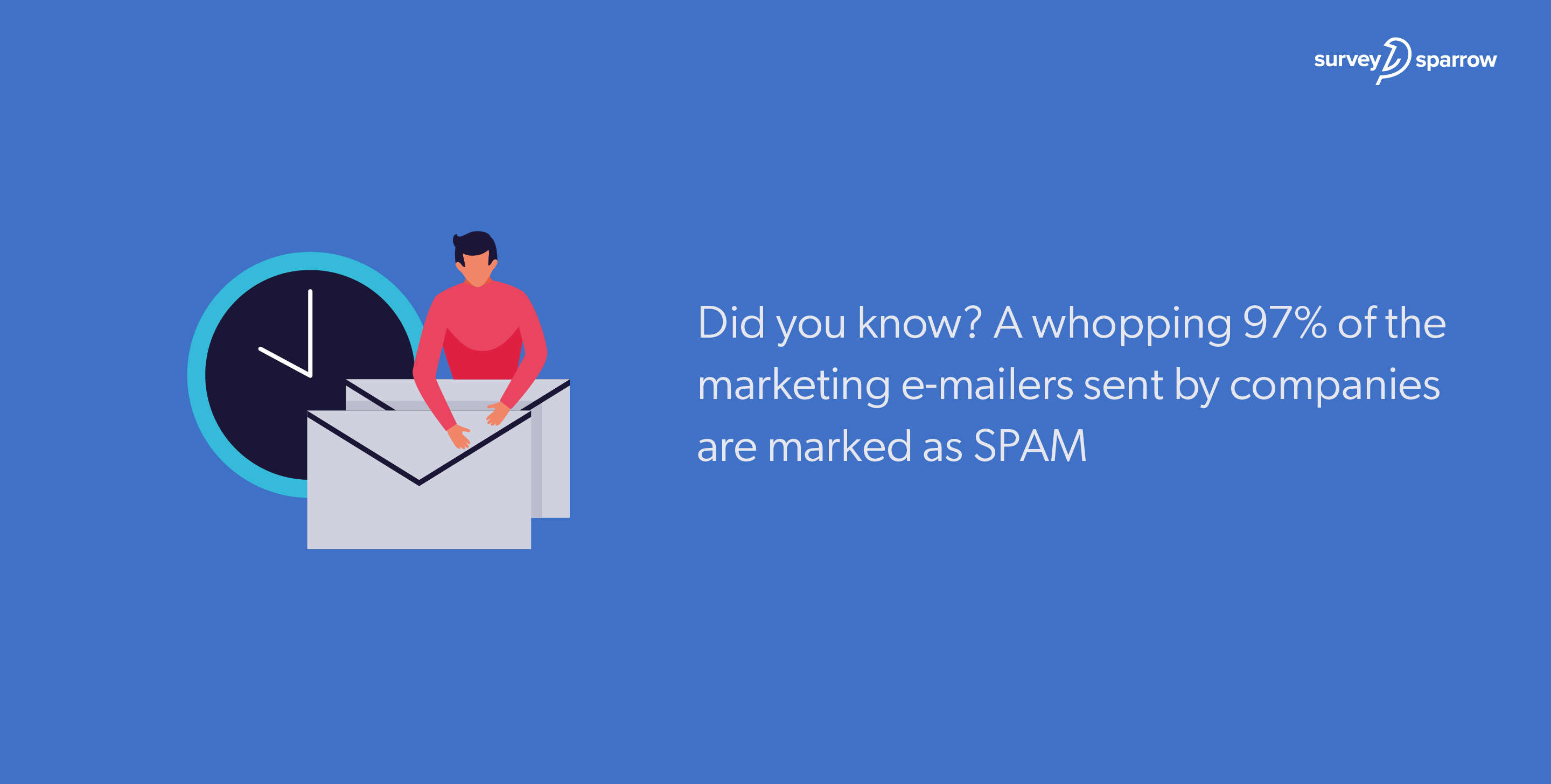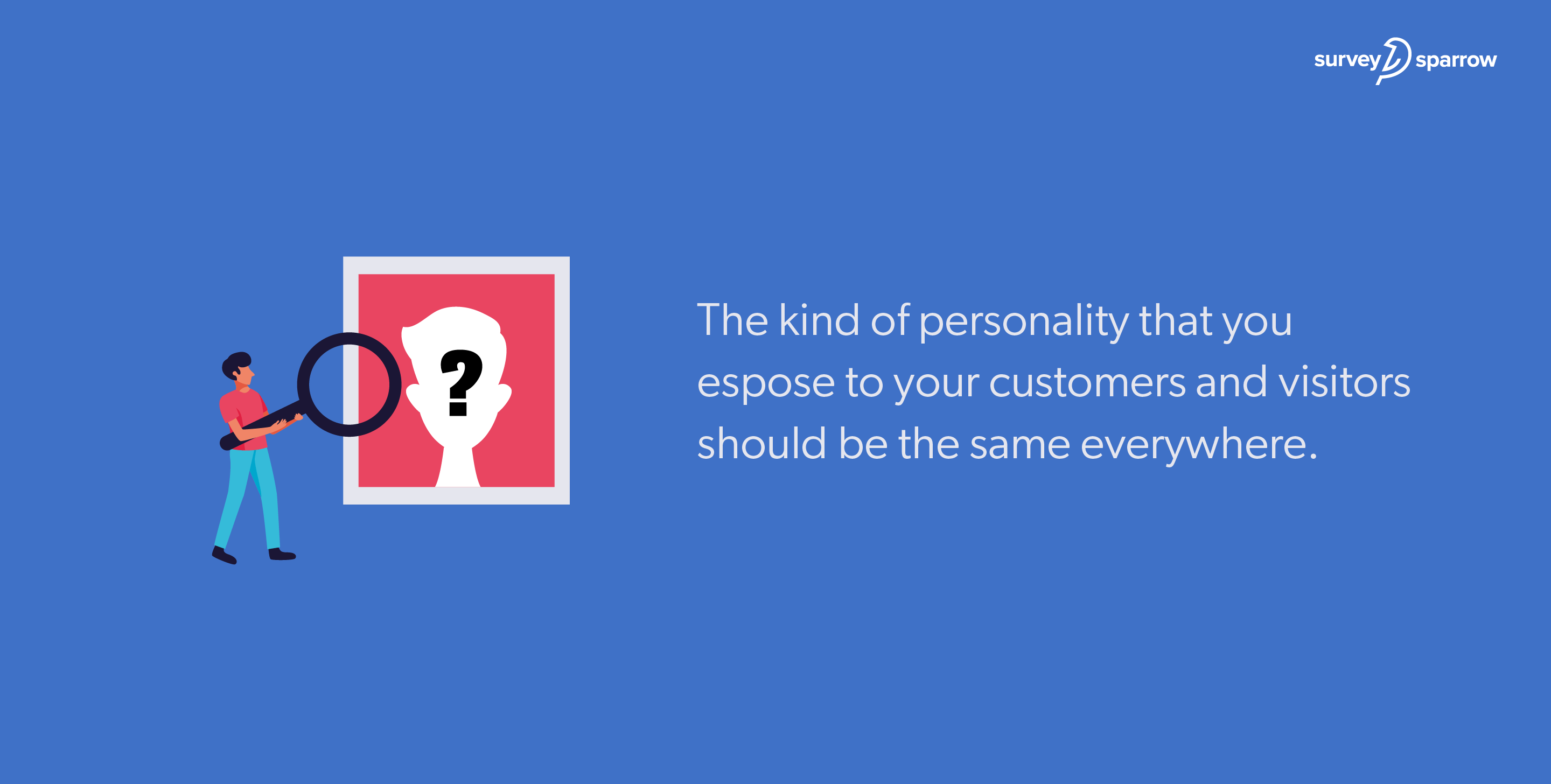According to Neilsen, your brand voice can have a huge impact on your customer’s trust. No prizes for guessing there. Customers will surely spend money on a brand that they think is reliable. It takes time to identify the kind of brand voice that you want for your business.
Businesses that last for decades know for sure what their brand voice is and stick to it because they know that any change might not be met well by their customers. It’s exactly why businesses should spend time building a personality that their customers will love.
When you are building a brand, there are a lot of things involved, from getting your website right, being active on social media, having a content calendar, taking photos, etc. Most of these things keep changing, but if there is one thing that should stay consistent, it is this- your brand voice.
What is a brand voice?
The personality and charm that you infuse in your brand’s communication are called brand voice. It includes everything, from the blogs you write to the images you post, from the way you communicate on social media to the way you reply to your email unsubscribers. It cuts through the noise and helps you stand out from your competition.

How to Establish Brand Voice?
The power of brand voice is huge. One can’t deny that. So, establishing a brand voice is very much important if you want to build a strong brand. Here are some tips to strengthen and establish a brand voice.
1. Review your business’ mission statement
The kind of personality that you espouse to your customers and visitors should be the same everywhere. It should reflect who you are and what you stand for.
The values that you hold and respect should be a part of your mission statement. If you don’t have a mission statement yet, now is the time to create one. Talk to all your stakeholders, find out what they think about your business and how they see it shaping up.
How do you want your customers to see you? Once you have this idea clearly defined in your mind, the next step is to talk to all the stakeholders and see if they think that the mission statement makes sense.
Let’s say when you are launching a new product, how do you want your brand to talk about it? All excited or as if you are just passing information to your readers. How do you want your customer service representatives to respond to any complaints? Formally or with a playful tone?
2. Gather your content and analyze
If you are a fairly established company, you will have a lot of content lying around. Review your content asset, which would be the following:
- Email templates
- Blog posts
- Videos
- Infographics
- White paper
- Social media posts
- Print collateral
The important question is if you have been consistent throughout in terms of the brand voice. You can also find out if there are any similarities in terms of brand voice? Is that voice acceptable to you or are you trying to change it?
What is the kind of improvement that you are seeking for your brand voice? Why are you thinking of trying to change your present communication style?
Find out pieces of content that are similar to the kind of brand voice that you want. Once you collect all of these, you will be in a position to narrow your brand voice.
Find out the words that have been used most, the kind of replies you have given to your customers, how they have responded to you, etc. All of this matters.
3. Describe your brand in a few words
Review the content that you selected amongst your entire pool of content. Jot down what is common among all of these. If it were a person, what kind of personality would you ascribe it to? What do you think others would think about it? Is it similar to any of your competitor’s?
What kind of brand are you at present? Forget about who you want to be, this part of the article concentrates only on who you are at present. Why do you think your brand voice is like this right now?
4. Do an audience survey
“Your brand is what people say about you when you’re not in the room.” — Jeff Bezos
If you think your brand is quirky, but your customers think you are a serious brand, then there is something seriously wrong with your communication. Also, like what Jeff Bezos said, your brand is what your customers think it is.
Go and talk to your audience, ask them what they think about your brand. Ask them to give reasons why they think about your brand in that particular way.
Was it because of some interaction with your brand? Was it because of your marketing messages? Your blog posts? Your promotional video? What makes them think the way they do.
Use SurveySparrow to send them a survey where you ask them these questions to find out if your efforts to develop a brand voice has borne fruit among your audience.
Here are some of the questions that you could ask in the survey:
- What are the 3 words that come to your mind when you think about our brand?
- Why do you use our product?
- Are you happy with us?
- Is there anything you want us to change in the way we communicate?
In fact, you can share the same questions even to the audience who are not your customers yet. Some of the questions may change for them, you cannot ask them why they are using your product. Take such measures into cognizance and you can even get inputs from non-customers.
Once you are done with the survey, share it with your customers and the public on social media. Look at the kind of responses it elicits and use that knowledge to your advantage.

5. Research your audience
Here is something else that you can do to understand your target audience even better. Take a sample of your most active customers and study the following about them:
- What kind of content do they consume regularly?
- Which are the social networking channels that they regularly use?
- What are their interests? What kind of TV shows and movies do they watch?
- How is their writing style?
- What are the publications that they consume?
If they watch comedy shows, then you can assume that they will appreciate the humor in your brand voice. If they are into documentaries, you might want to tone down your humor and focus on being positive and pass the information correctly.
Write down a list of the words that come to your mind when you review the choices made by each of the customers. Find out if there are any patterns that you can see. Arriving at all of this information is essential because your brand voice should be familiar to your target audience.
6. Create a brand voice chart
Now that your brand voice is defined, you can make it more clearer with a brand voice chart. It will be easier to use as a reference tool for your text and visuals are always using the same voice.
Make a template for your brand voice chart. Name the brand characteristic, and against it, describe it in detail. In the next two columns, write the dos and don’ts of it.
If such a practice is maintained, you refer, monitor and record the changes easily, instead of building one from scratch.
7. Talk to your writers
Now that you know what your brand voice should be, the next step is to include the most important people in it- the writers. Take your writers into confidence. Anyone who creates content and communication materials should be a part of this discussion.
Ask them to go through some of the content that has already been published and change them according to the new brand voice. Give them a copy of the brand voice guidelines and ask them to complete this exercise. Ask them to keep it at their desk for reference every time they create content.
Once the old content is rehashed for your new brand voice, sit with all the stakeholders and find out what everyone feels about it. Does it create a marked change or does it need more tuning?
8. Document everything
Include your brand voice and the best practices to follow in your company style guide so that there is a standard for all the communication that your company makes.
The style and the voice should never go out of tune at all. It is important that you document the findings and involve everyone so that it is communicated to the stakeholders.
Spread the word about the change in brand voice to everyone in the company. Ensure that it goes to every employee as they are also brand ambassadors.
Every customer-facing asset that your company creates should sound similar. Here are the reasons why you should document your brand voice guidelines:
- Acts as a reference material for the writers; new and old.
- Easy to onboard new team members
- Helps identify any shortcomings in the brand identity and messaging.
- Creates consistency in your communication
- Reduces confusion among readers.
- Helps with effective project management
9. Consider all touchpoints
If you sound quirky in your promotional videos but there is a tone of aloofness in the copy on your billboards, how will your target audience feel about that? Don’t you think it sends a confusing message to everyone. No matter where your content is present- billboards, TV, radio, emails, messages, etc, your brand voice should be the same.
When the voice is different across channels, your target audience might not be able to trust you. Remember that every word you put out there is a marketing message and you should treat it like that.
10. Do not copy your competitors
You can copy a lot of things from your competitors, but if there is one thing that you should not copy from them at all, it is this- branding.
Branding is something that is so unique that no matter how closely you resemble another business, the way you two brand each other should be completely different. Sure, you can check out how your competitors interact with their customers but don’t copy the way they communicate with their customers.
In fact, if you were to copy something that your competitors did, in terms of marketing mostly, you are more likely to gather the ire of your customers.
Look for qualities in your competitor’s brand which you think are worth emulating and see if it can work well with your brand. Or critique your competitor’s branding and find the missing elements, it will help when you work on your branding as well.

Why is having a strong brand voice important?
Some of the most popular companies have their own style and mannerisms. They have a clear sense of identity and purpose. The way they communicate with their customers is the same across all channels. Your communication should be consistent, otherwise it can confuse your audience.
Entrepreneurs concentrate on every other aspect of the business, but forget that to build an everlasting company, branding is extremely important. To build a successful business, a strong and lively brand is one of the core aspects.
Your content, voice, engagement- everything depends on your brand voice. Your brand’s content should speak to them on a personal level.
When you have a strong brand voice, people will know what to expect from your company. They know that they wouldn’t have to set themselves up for any shoddy show. Here is what happens when your brand voice is not in sync with the expectations of your customers:
- 81% of consumers have either un-liked a brand’s Facebook page or removed its posts from their Facebook timeline.
- 71% of consumers are being choosier about liking a company on Facebook or following a brand on Twitter.
- 41% of consumers have unfollowed a brand’s handle on Twitter.
- And a whopping 97% of the marketing e-mailers sent by companies are marked as SPAM.
Brand voice of famous companies
Here are some great examples of brand voice:
Starbucks:
Starbuck has become some kind of cult. The brand makes us a part of their story and their company. Their voice is so exploring. A novelty is hidden behind the voice of Starbucks. Take something new and explore with Starbucks.
Amazon:
Amazon made it simple to surf and find out whatever we want. They made it easy to explore, find new products and features. The voice of the Amazon brand calls us to explore, to find out more like the great jungle of Amazon.
Nike:
Nike is a huge brand which has developed a marketing strategy based on the idea of being a hero, somebody who can change the world, who can do better and be a master and champion.
Apple:
Apple has taken marketing tactics with a revolutionary voice. They encourage us to think differently, to be totally another person, to dream big, do big and just have an Apple product.
Coca-Cola:
Wherever we see Coca-cola we are witnessing friendship and love. The innocent connection between people, relatives, lovers. The Coca-cola bottle gives us a funny and joyous time.
Conclusion
Having a strong brand voice that customers across all channels can realize is one of the best gifts that you can give to your brand and your customers.
Building a brand voice isn’t a complicated affair, you should have known it by now. This article has outlined the steps that you need to take to create a brand of repute.
Your voice should be an accurate representation of you and your brand. It shouldn’t deviate from who exactly you are. While we do understand that it might look like a huge task, using the above tips will surely make the process easier for you.
Do remember that it doesn’t get over by just creating your brand voice. You need to be consistent in using it, otherwise the entire exercise is a waste of time.
Continue talking about your new brand voice to your employees, external consultants, freelancers, etc. You need to make your employees a proponent of your brand voice. It should seep deep into their minds that it becomes a part of company culture.






